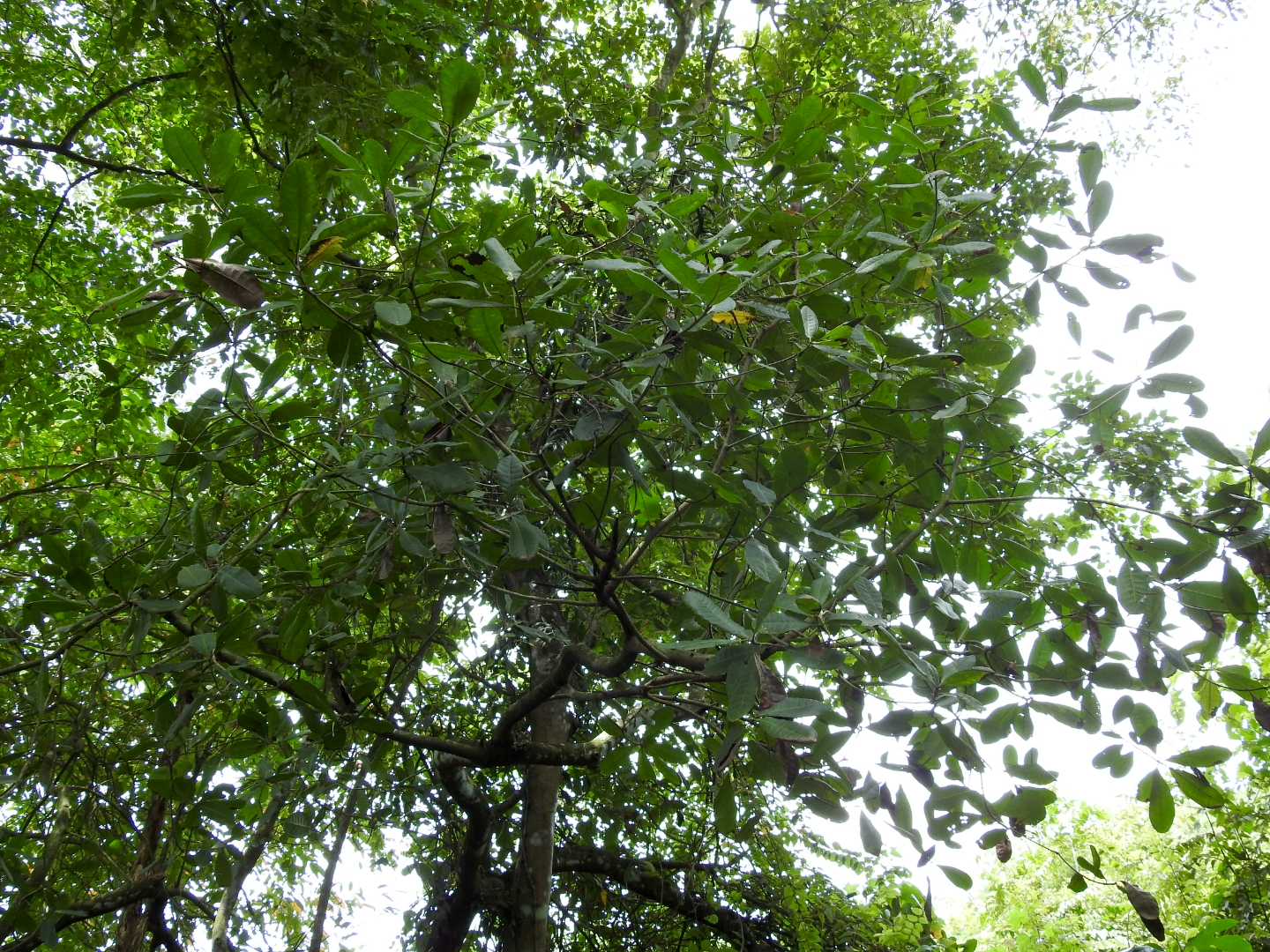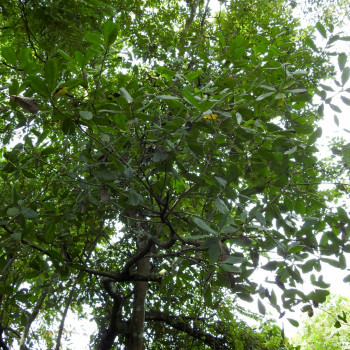Cashew nut

Scientific Name :
Anacardium occidentale L.
Synonym(s) :
Cassuvium pomiferum Lam.
Local/Common name(s) :
Kasumavu, Cashew nut
Family :
Ancardiaceae
Habit :
Tree
Flowering/Fruiting Time :
November-April
Habitat :
Cultivated
Endemic :
No
Status (IUCN) :
Least concern (LC)
Distribution :
Native to South America; Kerala: throughout
Nativity :
Exotic
Uses :
Medicine, Dye, Food, Beverage, Poison, Timber, Gum, Oil, Tannin, Marking ink
Description (Morphology) :
Gregarious evergreen trees, to 15 m high, bark pale grey to brown, smooth with vertical striations; blaze dull pink; exudation sticky, red; branchlets glabrous. Leaves simple, alternate, somewhat crowded on twig apices, obovate; apex obtuse, round or retuse, base acute or cuneate, round, margin entire, glabrous, shiny above, coriaceous; petiole 7-15 mm, stout, swollen at base, glabrous; lateral nerves 10-15 pairs, parallel, prominent, intercostae reticulate, prominent; glands axillary on main nerves and its branches. Flowers polygamous, yellow, streaked with pink, in terminal prominently bracteate panicles. Calyx 5-partite, lanceolate, imbricate, deciduous, with some pubescence on outside. Petals 5, linear-lanceolate, ligulate, recurved, imbricate; disc filing the base of the calyx, erect. Stamens 8-10, one usually longer than others; filaments connate at the base and adnate to the disc, glandular puberulus. Ovary superior, obovoid or obcordate, 1-celled, ovule 1, ascending from a lateral funicle; style filiform, excentric; stigma minute. Fruit a reniform nut, grey, seated on a large pyriform fleshy body formed of enlarged disc and top of the pedicel; pericarp gives acrid caustic oil; seed reniform, ascending .



